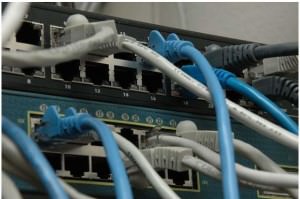5 Things To Know Before Buying Network Switches
It doesn’t matter if you’re in a big corporation or a small business, your workplace network should be able enough to keep your customers and users connected to one another securely and at every time of the day. Your ISP won’t be able to provide internet connections to each and every person on your team individually. Instead what they do is provide a small number of connections and you have to distribute them to everyone. This is where the network switches come in. Here are 5 things you should know about them before making a purchase.
Number of Users
All begins with the quantity of participants you will have to link. Note that a consumer is not just limited to an individual on a desktop; network clients can be other linked devices like printers, VoIP phones for official verbal communications, security CCTV cameras for protection, virtual firewalls essential for cyber security of the network, and wireless access points. In fact, a larger number of people necessarily involves more ports and quicker transfer rates but products like Cisco switches models are more than capable of handling them.
Power supplies
In certain ways, you’ll be installing your Access points in places where conventional power sockets are almost inaccessible. Luckily, numerous Access points (along with VoIP-call smartphones, virtual firewalls, as well as other systems) can be powered by Power over Ethernet, also known as PoE. This ensures they can remain attached and gain power while simply using an Ethernet cable. Search for something like a network switch with Ethernet ports that will meet the platform’s PoE requirements.
Speed
Network switches do not generate speed themselves, but the wrong switch can and will dramatically slow the system down. If you’re moving a large amount of information at a given time, you would like to ensure there are enough number of ports that can keep up with your demands for speed. Look for switches that have Gigabit Ethernet (GbE). These ports have the ability to detect and select the largest mutual speed between transmission and reception. HPE Aruba 3810m 16sfp+ has 40GbE uplinks and modular 10GbE for wireless with ClearPass policy manager that make it a fine choice for customers who want good speed.
Managed vs Unmanaged
If you want a switch to link up the important elements of your network, then a manually managed or customized switch should be your choice helping you manage the network more actively. On the other hand, an unmanaged switch is for the more laid-back networks. You can just install it and start using it without any manual configuration.
Value
Whether you need a 12-port switch or a 48-port one, you must always strive for assessing the product because of its value. Only you know what kind of a switch would suit your interests and your network the best. There are a great many switches from reputable companies available on the market to choose from but since most of them lie on the higher price margin, make sure you make the most economical decision that best fits your demands.





